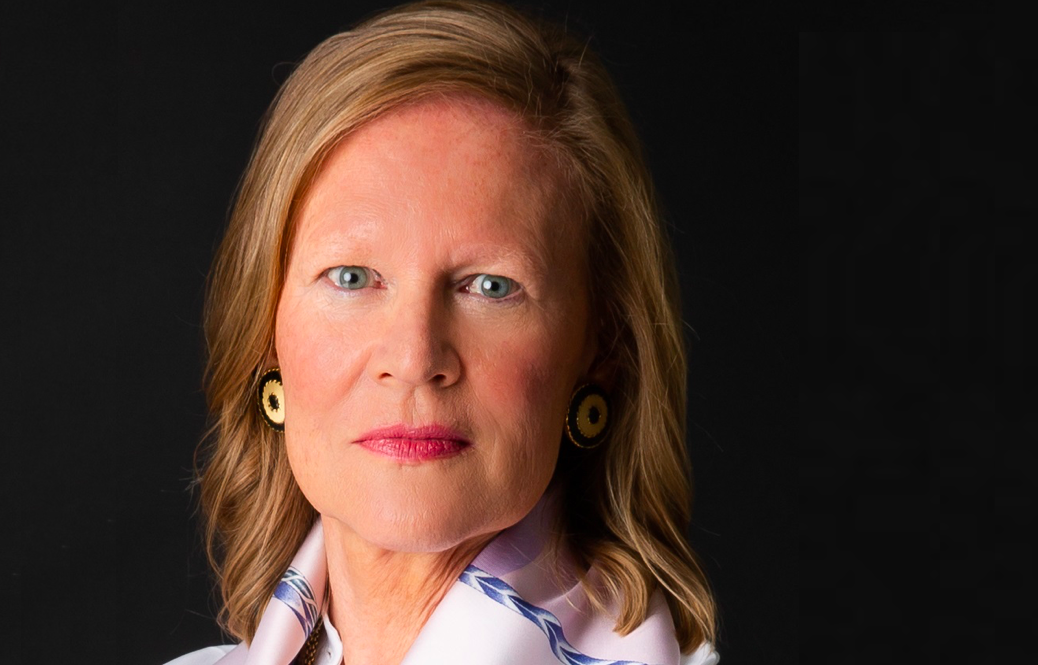By Hamlin Lovell, NordicInvestor
Over her 17 years at DWS, Kuijpers has had many senior roles, including over a decade on the global management committee; heading up global relationship management and strategic relations, and handling client coverage in certain regions. Her earlier career included heading European equity sales for SG Warburg. She was in 2019 named as one of the 25 most influential women in finance by American Banker. She has also been identified in 2020 by InsuranceERM magazine as one of the “most influential” leaders on climate change in the insurance asset management space.
After 33 years in the US, Kuijpers has just returned to Europe, partly because being based in London helps to reduce her carbon footprint by taking trains instead of planes to visit European clients. This is one part of DWS’ own ESG policies on business travel.
“DWS has a local presence in Sweden, from where we cover Denmark, Finland, Iceland, Norway and Sweden. The local team works on all ESG issues with colleagues from around the world to bring our ESG expertise to all clients in the Nordic countries.”, says Kuijpers.
DWS was an early mover in ESG, moving from G to S to E before embracing all three. “In 1994, the corporate governance practice started under the then CEO, who wanted to use an active voice for voting and shareholder meetings. Then in 1997 we started on the S with impact investing, which has over 23 years invested more than USD 2 billion into microfinance debt funds that promote financial inclusion by providing loans mainly to women in emerging economies. The E came into focus in 2005, when the then CEO identified ten long term megatrends, of which climate change was the tenth. In 2008, we became signatories of the UN PRI. In 2015, we were the first asset manager accredited by the UN to help sub-Saharan Africa meet the Paris accord goals, and to this end we have invested in renewable energy and agricultural funds in Africa. In 2018, DWS became a publicly listed company and started publishing annual reports and sustainability reports. When Asoka Woehrmann became CEO in 2018, he embarked on an ESG strategy for the entire company, embedding ESG into the corporate DNA with further improvements to the investment platform and client engagement identifying new product and solutions”, says Kuijpers, who envisions the zeitgeist shifting from shareholder to stakeholder capitalism, and admires Joe Biden’s Green Deal agenda. “Recently Covid 19 has intensified the sense of urgency around ESG. For instance, it has highlighted how a food crisis could leave over 400 million people hungry in developing countries, according to UN estimates”, she adds.
Outperformance
The aspiration to make the world a better place is firmly grounded in delivering competitive returns to clients. DWS has for years held a core belief that ESG is consistent with outperformance in equities, bonds and real estate, based on studies such as a “meta study” covering multiple ESG research reports, carried out by DWS and the University of Hamburg. In the first half of 2020, equity strategies with high ESG scores seem have outperformed by an even larger margin.
Internal and external data
As well as extensively researching investment performance data underscoring the case for ESG, DWS gathers vast amounts of non-financial data to rank companies on ESG criteria. For public markets, DWS has built its own proprietary ESG data engine, which populates 3,000 data fields by drawing information from eight external data providers (ISS;Ethix; MSCI; Morningstar; Sustainalytics; Trucost; Oekom and REPRISK) and other public sources including NGOs. The low correlation between different ESG ratings agencies’ scores is something that DWS views as a virtue: “a multi data vendor approach illuminates different facets, because different firms provide different data and look at ESG from a different angles. More data means better outcomes”, says Kuijpers.
“This is a very comprehensive ESG dataset, which provides ESG data on over 10,000 issuers, and can be accessed by all 900 of our investment professionals within the portfolio management system. Companies can be screened for metrics including the UN Sustainable Development Goals (SDGs), and they are ranked on a seven-tiered scale of A to F”. Companies are also given climate transition risk scores. DWS expects that those with high climate risk scores will face increasing carbon costs, and need to invest more in capital spending programs to transition.
Engagement versus exclusion
Companies deriving more than a certain percentage of their revenues from controversial weapons; controversial industries; having controversial business practices or high carbon ratings cannot attain the highest ESG ranking from DWS, but this need not prevent ongoing engagement about how business models can change to improve their ratings in future. DWS does exclude certain sectors from some active ESG or impact SDG, and passive index and ETF products, and can customize indices or mandates according to clients’ preferences. However, “exclusion is a last resort, because once we have divested we lose the right to engage and steer companies in a different direction”, says Kuijpers.
DWS has sent letters of engagement to over 1,000 companies. Engagement issues have included dimensions of diversity. For instance, racial corporate inequality increases with seniority, according to a McKinsey study. The pandemic also amplifies the relevance of gender lens investing, since women are bearing more of the burden of increased unemployment. The pandemic has as well had given companies the opportunity to demonstrate their social purpose by repurposing production towards sanitisers, protective clothing or ventilators.
ESG Coverage
ESG strategies span active and passive equities, and fixed income, including a recently launched sovereign bond ESG ETF, and dedicated teams for green bonds and social bonds, as well as alternatives. Real estate and infrastructure can be accessed via public equities, but for private markets, including direct real estate; real estate debt; infrastructure including solar and wind farms and private equity, different datasets are used. For instance, since real estate is responsible for 40% of greenhouse gases, it is essential to measure the energy efficiency of property: “the European real estate business has just committed to reduce carbon emissions by another 50%”, says Kuijpers.
ESG coverage of 100% may be a long-term aspiration, but for now assets can be split into three categories. Of year end 2019 assets of Euro 767 billion, Euro 521 billion or 68% is designated as ESG, of which Euro 69.9 billion or 9.1% is pure ESG and Euro 451.4 billion or 58.9% is integrated ESG.
Passive strategies partly explain the Euro 246 billion or 32% that is neither pure ESG nor integrated ESG. While DWS is attracting assets into its ESG index and ETF products, including customized solutions, many of its ETFs date back 15 or more years to before ESG became widely sought after. And on the active side, some institutional mandates go back 20 or 30 years, while some mutual funds were launched in the 1950s. “To change these strategies, unanimous investor consent would be required, or prospectuses would need to be revised”, says Kuijpers. Of course, some of those investors may, over time, switch into ESG products, though this could take some years as decision makers will include trustees, advisers and individual retail investors.
Incidentally, the question of whether ESG should apply to short exposures does not apply since DWS is not shorting equities in it’s ESG portfolios.
Transparency and reporting
DWS is blazing a trail towards more transparent reporting of its ESG coverage and policies. Though the EU is in the process of introducing a taxonomy to classify ESG strategies, and an SEC commissioner, Elaid Roisman, recently called better explanation of terms such as “ESG”, “green”, and “sustainable”, the lack of a standard definition of ESG means there are different opinions about how much of asset managers’ assets are ESG. “We have asked our auditor to confirm that EUR 521 billion is run according to ESG and this is audited in great detail, with policies defined and explained. We are raising the bar for the industry by having the number audited”, says Kuijpers.
DWS’ proxy voting record is also public. The firm has recently voted for 87% of ESG resolutions and 98% of climate resolutions, and these were the highest percentages amongst a group of 50 asset manager families monitored by Morningstar.
More specific reporting includes carbon footprints. DWS is a TCFD signatory, reports its own carbon emissions , and encourages companies to sign up to the TCFD framework.
Reinventing aviation and automobiles
Aviation and automobiles currently generate high levels of carbon emissions, and help to illustrate DWS’ forward looking approach.
An airline committed to carbon neutrality, which is currently attained through buying carbon credits or planting forests to offset its own emissions, would not satisfy every set of ESG criteria, but Kuijpers says, “I am a born optimist and am encouraged to see companies commit to net zero carbon emissions by 2050. There is currently no alternative to fossil fuels for airlines, but the industry is working on piloting new fuels to be used for aviation. Offsets are an interim strategy and we will bear with them on their transition pathway. We believe in human ingenuity to create new solutions”.
“A good example of this is Tesla, which has now overtaken Toyota in market capitalization. All alone, Tesla has completely disrupted the industry, which is now moving from ICE (internal combustion engine) or diesel engines to an electric future”.
“We are looking at long term transformation, and we see lots of similar developments taking place in many industries. Big oil companies are now reinventing their business models towards renewables, and this will help to keep the world below two degrees, in line with the Paris Climate Accord”, says Kuijpers.



